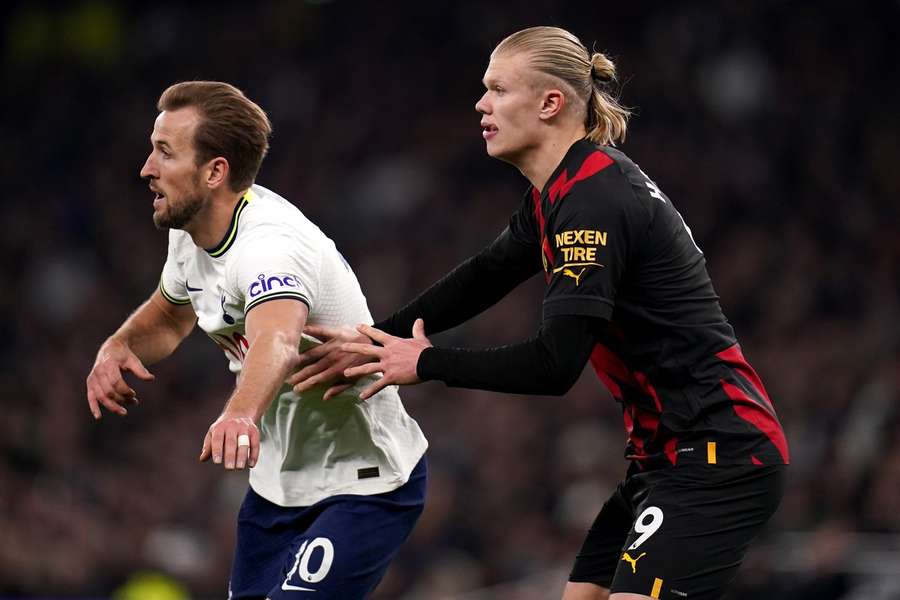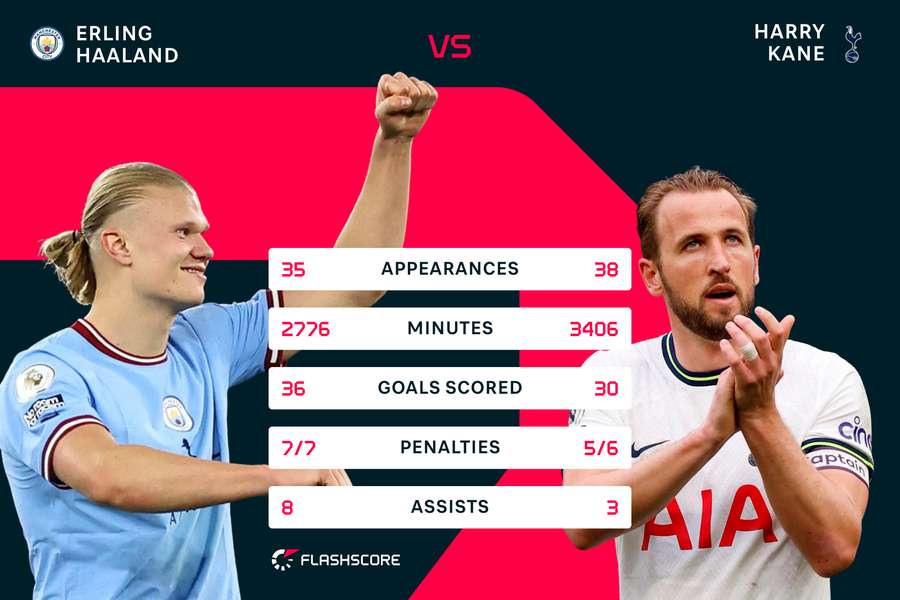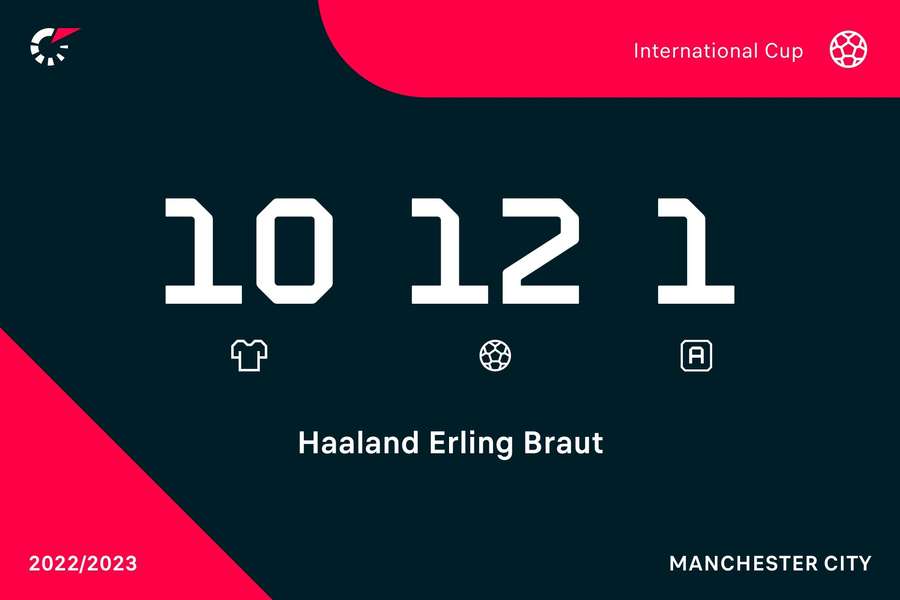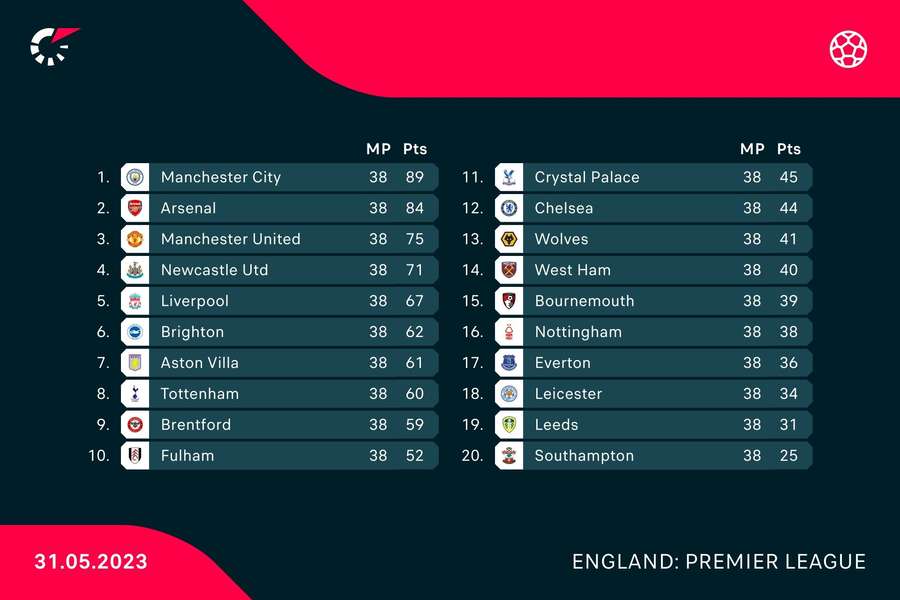Haaland and Kane: Two elite strikers at the top of their game but who is better?

Haaland was recently anointed as the Premier League's Player of the Season and Young Player of the Season and justifiably so as not only was he the league’s top scorer, but he also won the league with Manchester City and broke the record for the most goals scored in a single Premier League season.
However, given the sheer impact Haaland has had in his first season in England, Kane’s 30 league goals for Tottenham have gone somewhat under the radar. Kane has broken a couple of records himself this season, becoming both Spurs' and England's all-time top scorer.
Clearly, both players have had incredible campaigns. Crossing the league 30-goal mark is always a remarkable achievement. To date, no other player has crossed the 30-goal mark in any of Europe's 'top five’ leagues this season.
That said, there is still one more round of fixtures to go in Ligue 1, Serie A and LaLiga at the time of writing.
Honourable mentions should go out at this point to PSG's Kylian Mbappe (28 league goals) and Lyon's Alexandre Lacazette (27 goals) who could get close this weekend as well as Napoli's Victor Osimhen (25 goals) and Barcelona's Robert Lewandowski (23 goals). The Bundesliga’s top scorers were Werder Bremen's Niclas Fullkrug and RB Leipzig's Christopher Nkunku who scored just 16 goals albeit in a slightly shorter league than the others mentioned.
Looking around the top leagues only brings to light just how good Haaland and Kane have both been. But who is better? Let’s dive into some numbers to get more clarity on the issue.
The Raw Numbers
Haaland scored 36 goals in 35 games in the Premier League - that’s just over a goal a game. Kane managed 30 in 38 - obviously, a lower hit rate. Looking at their minutes played, Haaland scored a goal in the league roughly every 77 minutes while Kane scored every 113 minutes. Haaland seems to be winning here.
Haaland scored 38 per cent of City’s goals (94) in the Premier League. Kane, however, contributed 43 per cent of Spurs' goals (70), which goes to show he is a more integral attacking player to Tottenham, relatively speaking.

Kane is known for his talismanic, all-round performances and his tendency to drop deep and play a fusion of number nine and 10 roles (a nine-and-a-half if you will). Whereas Haaland is more purely a classic number nine. Despite this, Haaland actually recorded more assists than Kane in the league (8:3) - not that assists are necessarily a good measure of impact but more on that here.
Assists can be a statistical red herring of sorts because they rely on teammates scoring to exist in the first place. Expected Assists (xA) tell a more nuanced story. They show how many assists a player should have had if the chances they created were finished off by an average player.
Kane’s xA for the season was between seven and eight (according to understat.com). That means he could reasonably be expected to have had seven or eight assists if he were playing in an average team. This is more a reflection on his Spurs’ teammates' inability to finish chances than anything.
Even though Kane recorded far fewer assists than Haaland, he should have had about the same. In fact, Haaland’s xA was less than six for the season, he actually outperformed there. Again, this is partly a reflection on his team - given Haaland plays in the best team in the league (if not the world) it's no surprise that his teammates finish more chances than expected.
We can safely assume that if Kane were at City, he’d have had a lot more assists, too. So, even though Haaland literally got more assists, Kane might narrowly win on this metric in a way.
Speaking of xA, what about xG?
Well, this is interesting - Haaland’s Expected Goals (xG) for the season was almost 33 (according to understat.com), meaning an average striker in the league should have scored 33 goals if they played the minutes he did for City.
He’s overperformed that number but not majorly. Kane, on the other hand, registered an xG of just 23, incredibly, 10 fewer than Haaland. Obviously, he outperformed that expectation quite considerably. This is an indication of the weakness of the side he is in but also, more importantly, his outstanding finishing ability in comparison to his peers.
Considering their respective xG overperformances, you could argue that Kane would have scored even more goals than Haaland if he were playing for City. He outperformed his xG by almost seven goals whereas Haaland did by only about three.
Unfortunately, it’s all a little more complicated than concluding simply that this means Kane would have scored 40 goals for City had he been there because different strikers get into different positions and shoot from different angles. However, we could at least say, Kane edges Haaland in this metric.
Champions League
Stepping away from the Premier League for a moment, one thing that really sticks out in Haaland’s season is his unbelievable record in the Champions League. He has 12 goals in 10 games (with the final yet to come).
It’s not a record-breaking figure - a few familiar faces have scored more goals in a campaign (Cristiano Ronaldo (three times), Lewandowski (twice), Lionel Messi and Karim Benzema) - but it is very impressive nonetheless.

Kane scored just once this season in the Champions League and it must be said, their respective achievements in this competition weigh heavily in Haaland’s favour. More points to Erling here.
Two Elite Strikers
Looking over the numbers above, one thing is clear - both these players are elite performers in their positions. For me, it’s probably enough to just leave it there and applaud them both but since we are trying to tackle the question of who is superior, there is one nagging issue that is at the forefront of the conversation that can’t be left alone.
The issue is that Kane plays in a far weaker team and so, arguably his goals, although fewer, mean more.
This is an intuitively compelling case for Kane. The idea is simple - Spurs are worse than City by some margin and so, if Kane were in Haaland’s shoes he might have scored even more than him and, inversely, if Haaland were playing for a somewhat dysfunctional Spurs side, he might have scored fewer than Kane’s 30. The xG numbers above point towards this idea, too.
It makes sense to say something like ‘Spurs are worse than City’ but this statement is qualitative in nature. How can we make this argument a bit more objective to test it? How can we quantitatively compare the two teams so we can measure the respective goal tallies more accurately?
A New Perspective
Well, thanks to the fact that they play in the same league, the most obvious objective measure between the sides is their league performance. City finished with 89 points while Spurs finished with 60.
Thus, Spurs recorded 67 per cent of the number of points City gained. In this way, we could say that Spurs are about two-thirds the level of City as a football team.
In Simon Kuper and Stefan Szymanski's 2009 book Soccernomics, the authors famously and powerfully argued that the wage bills of professional football clubs bore the strongest correlation to league success. That is, a team’s ability is best ascertained by the money they spend on their players - makes sense.
As it turns out, according to spotrac.com, Spurs’ estimated wage bill is about 60 per cent of City’s. Thus, we could argue that Spurs should perform at about 60 per cent of the level of City.
As mentioned, their 60 league points were actually well over that proportion of City's and so by this wage metric, they outperformed expectations, relative to City. However, with the fifth-highest wage bill in the league, Spurs underperformed relative to the league as they only finished in eighth place.

Interestingly, and (if you subscribe to the view in Soccernomics) predictably, the proportionate difference between wage bills and league points between the clubs is not too large. So let’s call it somewhere in the middle of both, erring in favour of Tottenham, and say that Spurs are about 65 per cent of the level City as a football team.
If all things were equal between Haaland and Kane as players (they aren’t but for the sake of argument) then Kane should score about 65 per cent of the goals Haaland does according to the idea that he is in a team about two-thirds as good.
Kane’s 30 goals are much more than that proportion of Haaland’s 38 but let’s adjust these numbers for appearances. If Haaland had played 38 matches, he should have scored 39 league goals according to his goals-per-game record. If he had played the same amount of minutes as Kane, though, he should have scored about 44 goals according to his goals-per-minute ratio.
Taking the more accurate goals-per-minute measure, Kane's tally is just about 68 per cent of Haaland's projected total. Weirdly, this is almost exactly what the differential in wage bills (67 per cent) predicts the gap between their tallies to be if all things else were equal... maybe, they aren't so different as players after all.
For the record, If we run the same equation after subtracting penalties (as is the trend these days), it turns out that Kane's tally is about 71 per cent of Haaland's projected total. Take from that what you will.
There are plenty of good arguments for both Harry Kane and Erling Haaland to be considered the best striker in the Premier League, maybe even the world. Looking through more and more statistical metrics, what seems to become clear is that they are just both very, very good players - players we are lucky to be able to compare in the same league.
